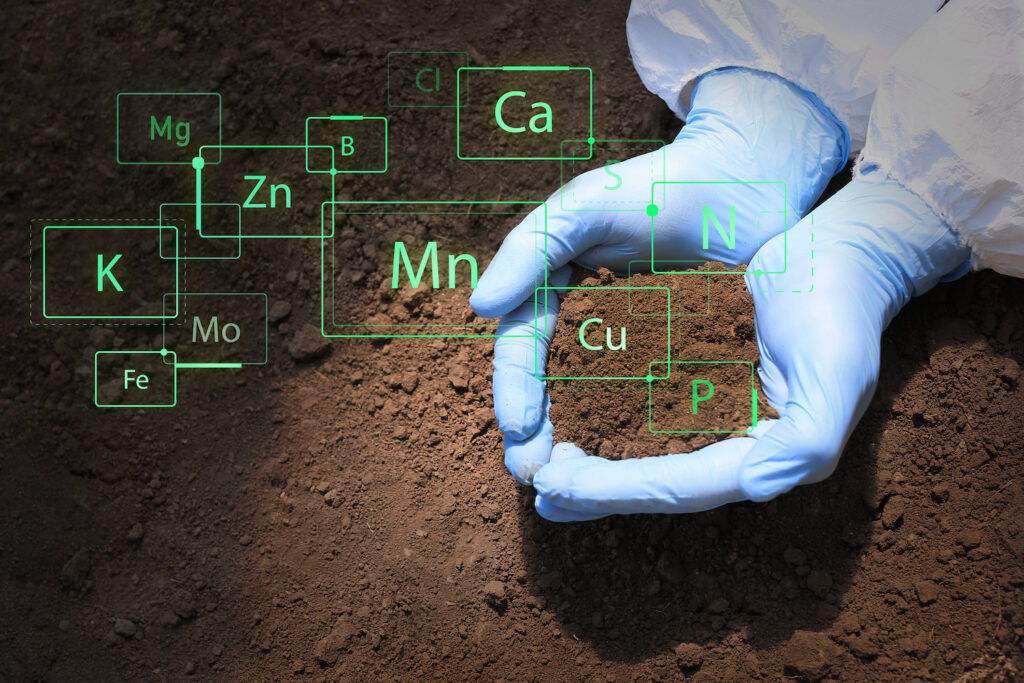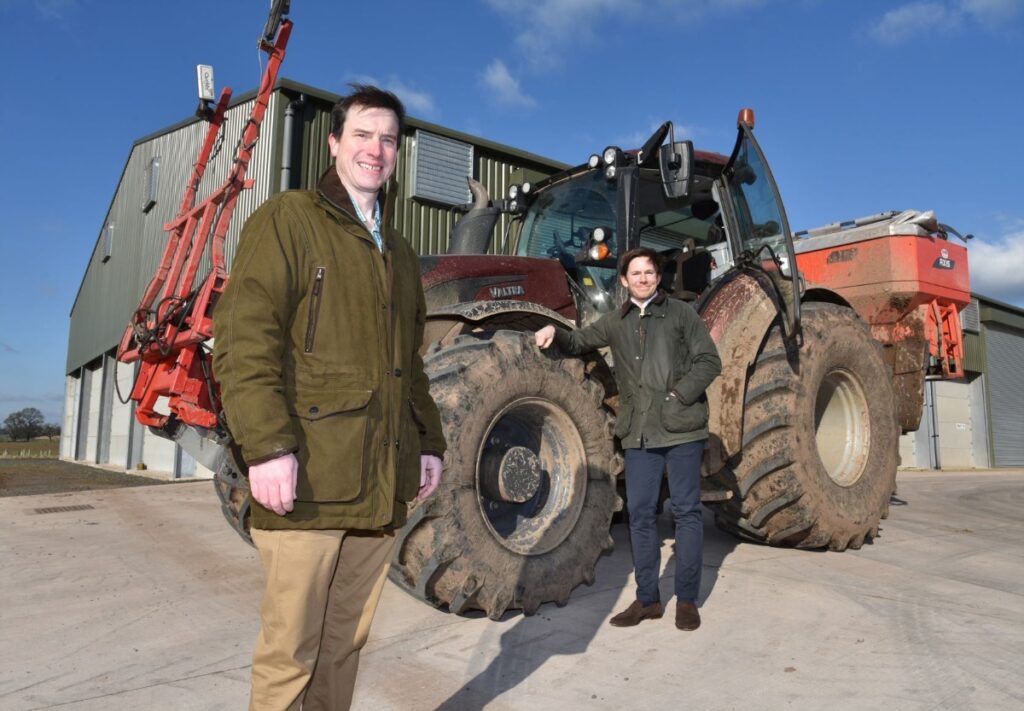Ukraine war: What impacts are we seeing on British farms?
23rd March 2022
The Russian invasion of Ukraine has created a humanitarian crisis and caused far-reaching impacts globally. In the UK it has brought food security concerns to the foreground and increased the strain on farmers already battling the impacts of the past two years. Farmers Guide spoke to farmers and industry experts to shed light on the current situation, and any help available to farmers.

The war in Ukraine has added another layer of uncertainty for British farmers after an already tumultuous couple of years. Recent weeks have sparked concern over the supply and spiralling cost of inputs and supplies, with the market changing on a day-to-day basis – making business planning for the future extremely difficult.
AHDB head of strategic insight David Swales commented: “What’s happened in the last few weeks has had a phenomenal impact on the agricultural market. Ukraine is a really big producer and a big global exporter, particularly of wheat and oilseed type products, so that’s having a profound effect on prices.”
Russia is the world’s biggest exporter of wheat, producing around 18% of international exports, while Ukraine produces about 12% of the world’s wheat.
Fertiliser prices “reacted very strongly”
Livestock farmers buying in feed will have been hit by wheat price increases from around £220/tonne to nearly £300/t, while fertiliser prices have reacted very strongly, rising from £200-300/t a year ago to around £1,000/t currently, and there are concerns about availability.
Openfield fertiliser manager Lucy Hassall said initial reactions and early reports on the situation in Ukraine created serious concern among many growers, and the company saw some uptake in purchases for next season’s requirements – where cashflow and storage allowed. While managing risk in this way can sometimes be beneficial in looking at a proportion of requirements, decisions should be carefully considered as we are a year away from 2023 applications.
AN supply will be tight for the next six months at least, she added.
When it comes to nitrogen, soil samples and nitrogen testing – e.g. CF N-Min – could be useful, Lucy Hassall advised, as they measure both the amount of nitrogen in the soil and the amount that will be available to the crop between spring and harvest before you put any nutrients on. This allows farmers to measure exactly the amount needed to avoid overapplying and wasting money.

Soil samples and nitrogen testing such as CF N-Min could be useful, Lucy Hassall advised, as you can measure exactly the amount needed to avoid overapplying and wasting money.
Reactions from UK farms
Fourth-generation farmer Richard Heady who runs a mixed 1,000-acre arable and beef farm in Milton Keynes with his dad and uncle, has seen huge fluctuations in input costs such as fuel and haulage over the past couple of years. But since the war broke out in Ukraine it has increased substantially.
He commented: “Yes the value of crops in store has doubled in the last year, but so has red diesel, electricity, steel and concrete. Fertilisers, along with ag-chemicals such as glyphosate, have tripled in price over the same time period. I can’t see any of us profiting from these rises as our margins will be as squeezed as ever, whilst we take the blame for high food prices.”
The farm has been evolving over the past few years to help the business become more resilient against input costs. “Reducing tillage and growing more spring crops has helped us reduce our diesel and ag-chem use,” Richard added. “We are growing more beans this year, which has helped us reduce our nitrogen fertiliser use, but overall, our costs are going to go through the roof this year. We all have our fingers crossed for a dry harvest, as no one wants to be drying crops at current energy prices.”
Richard, like many in the industry, sees the key issue as being food security – with the UK being only 60% self-sufficient in food, the general public should be concerned. Commenting on what support he would like to see being offered to farmers, he said he would like to see farm supply businesses confirming what they expect to be affected and unaffected by the current situation.
“Not knowing what will be available to us is causing sleepless nights,” he says. “We just bought all our spring fungicides early after a supplier mentioned ‘supply issues’. Are we sensible or have we just added to the panic buying effect?
“Fuel is my current biggest concern, with supply companies not even confirming prices before they deliver to farms. Do we fill up now at an unknown sky-high price, or wait it out for the dust to settle and risk none being available when we need it? Can the Government step up assure that the businesses who need fuel the most will get it?”
Warwickshire dairy farmer Charles Goadby farms in partnership with his two brothers, milking 350 Holstein cows that are housed all year round. The farm grows wheat, oilseed rape, oats, barley, potatoes and maize on 1,300 acres.
Charles and his brothers haven’t made any long-term changes to the running of the business in response to the crisis, and he says it is important not to make knee-jerk decisions. A building that they intended to put up this year has now been put on hold but they have been able to stock up on many of the inputs they need. Despite this Charles pointed out that the situation is unlikely to resolve within a year and even farms that are well prepared this year will face difficulties next year.
While they were able to fill up the tanks just before the Ukraine invasion, fuel has been the biggest initial impact on the farm. With the local contractor who does their foraging work unable to give a price for chopping their silage due to unpredictable fuel costs it looks likely that the farm will be supplying the fuel.
Likewise they had bought fertiliser early but have bought another two loads (57.6t) since at £650/t, though originally it was just over £300/t. Rapemeal is the main source of protein for the ration and they have taken out a 12-month contract on this, but feed grade urea has proved very difficult to get hold of. Initially Charles bought 4 tonnes at £1,100 but a force majeure meant he could only get 1t and the next quote was £2,220/t. The farm is also looking very closely at manure management to ensure they can get every bit of use out of it they can – including investing in booms for the slurry tanker.
A big worry, he said, is that turnovers will have to increase by 50% – if we go on the price of wheat – to make a smaller margin than last year. Not only that, there’s also concern about the credit limits and credit deals with companies. “Can companies afford to give farmers the credit they need for the working capital for fertiliser, or are we going to have to stump up the cash, which we haven’t got now, never mind at these inflated prices, much earlier?” he asked.
With schemes such as ELMS and the Sustainable Farming Incentive encouraging land to be taken out of production for environmental gains, Charles stressed that nature and farming are not mutually exclusive: “We can farm and maintain production while also enriching and improving the environment and biodiversity, which I feel is what we should be aiming for.”
He believes measures should be taken to prevent large companies buying up farmland and rewilding it to offset their carbon footprint – and the government should assist with making changes to Red Tractor to include processors and retailers as a commitment to fair trade. “It’s pointless us going to all these lengths to make the highest quality, most sustainable food if we’re going to be undercut to buy cheap rubbish from abroad,” he commented.

Oliver Scott (left), farm manager at Bradford Estates in Shropshire, says we need to end reliance on Russia for cereal crops. Pictured with managing director Alexander Newport.
Farm manager Oliver Scott, who looks after the 3,600-acre Bradfords Estate in Shropshire, agrees that the crisis has exposed the UK’s food security issues.
When working on the business plan last year, Oliver expected diesel would be around £0.65/litre, but as the crisis started to unfold, this increased to £0.85/litre, but he has since heard quotes of £1.20–1.50/litre. As we come into spring, he will be using around 1,000 litres a day, while one contractor he spoke to who does a lot of livestock work will be using 2,200 litres a day.
While it is right that we should farm in more environmentally friendly ways, as encouraged by the agri-environment schemes brought in to replace EU subsidies, Oliver said if the war drags on for months or years, this will cause problems with food security.
“There is a lot of talk about how we need to end our reliance on Russia for gas and oil and that is the same for cereal crops. We need to be able to produce more food in the UK and keep it here,” he said.
A challenging year ahead
While farmers will be used to responding to a certain amount of volatility and price changes, since the Russian invasion the future is deeply uncertain. When costs go up the obvious step is to try to do things as efficiently as possible but now is a very difficult time to be making those planning decisions, Mr Swales acknowledged.
“I think it’s really important that farmers think carefully about what they producing and how this year. Doing the same thing that you’ve done in the past might not be the best approach now,” he added.
However, it’s clearly going to be a challenging year. Several sectors have already been facing big challenges – with the pig sector being the obvious one. At the end of last year the average pig farmer was losing £39 per pig and the current situation, including the hike in wheat prices, will have a big impact, he added. Leading Scottish pig farmer Jamie Wyllie recently estimated that losses had deepened to more than £56 per pig, so a large contraction in pork production is expected in the coming year.
AHDB has created a hub on its website for farmers to keep up to date with the latest impacts of the Ukraine war and developments in the marketplace for inputs and outputs. Daily updates and insights will allow farmers to check the prices they are being offered by merchants are in line with what’s happening in the broader marketplace, Mr Swales said.
AHDB also has a nitrogen calculator that can be used to plug in figures around fertiliser and wheat prices to work out the optimal amount of application.
